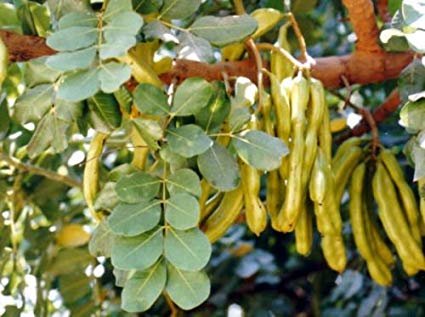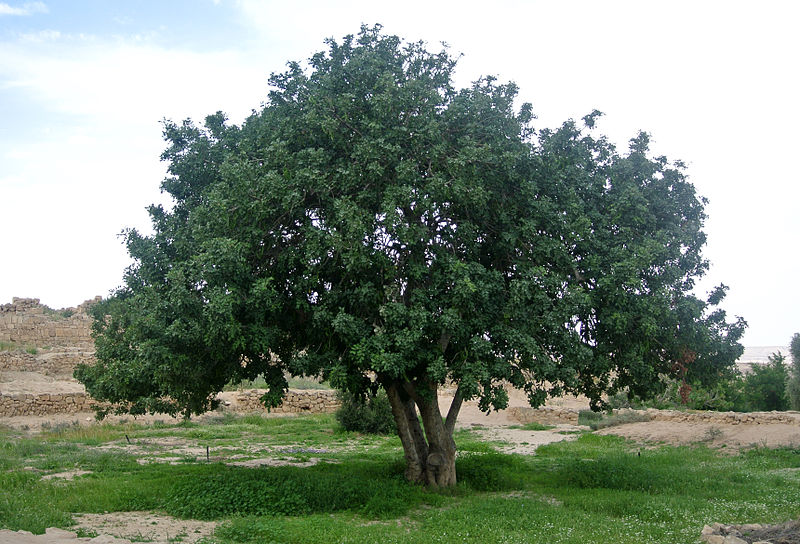Each year, with the coming of Advent, I become like a Hebrew prophet of antiquity who can his hold tongue no longer. For within me doth burn a great truth that I must reveal to believer and unbeliever alike. It involves an oft-repeated detail of Christian history that we in the West only half understand. Specifically, the eating habits of one John the Baptist.
John’s earthly mission, should it bear repeating, was to proclaim the coming of a Messiah who turned out to be his cousin, Jesus of Nazareth. John called for widespread repentance and baptized his followers, including Jesus himself, in the Jordan River. John’s travels often took him into the rocky hills and badlands of the Judean Desert, now part of Israel. It was ideal terrain for a self-styled preacher and ascetic who often locked horns with civil and religious authorities. By all accounts, John was a woolly and unvarnished character. This Gospel passage — which most mainline Christian churches read on the second of the four Advent Sundays that precede Christmas — makes John come across as semi-feral: “John wore clothing made of camel’s hair and had a leather belt around his waist. His food was locusts and wild honey.” (Matthew, 3:4)
While John’s hirsute wardrobe sounds plausible enough, it’s the reference to eating locusts that remains problematic. When I first heard this verse as a kid growing up Catholic in Florida, I couldn’t imagine anything more revolting. We had Eastern Lubber grasshoppers down there (Romalea microptera). They were black, yellow, and red; horrid things, some four inches long, that clung with monstrous intent to the window screens. And to hear my Catechism teacher tell it, John the Baptist would dunk these things in honey for breakfast? That disturbed me more than the hairy-legged nun who I once saw order a plain McDonald’s hamburger (no ketchup, mustard, onions or pickle — just a super-sized helping of self-denial).
It wasn’t until decades later, while reading “Tree Crops,” a classic horticultural work by Joseph Russell Smith, that I stumbled upon a fuller explanation.
First of all, it’s likely that John the Baptist really did eat locusts. They were, in fact, the only insects that met the kosher dietary requirements of Jews, and later, the Halal dietary requirements of Muslims. Locusts were, and still are, a nutritious food source eaten across Africa, Asia, and Central America. High in fatty acids and minerals, their dried weight contains up to 62 percent protein. Locusts can be pickled, dried, smoked, boiled, roasted, grilled, stir fried – basically, whatever the cook deems necessary to lessen their colossal ick factor.
Yet for North Americans and Europeans, there’s an untold story about locusts that’s been overlooked in the Bible’s English translation. Namely, that the other locusts John the Baptist ate were likely the seed pods that grow on the locust tree. The six-inch pods contain leguminous (bean-like) seeds. Around the Mediterranean basin, the tree goes by many names: locust, carob, carob bean, sugar pod – and, drum roll please – St. John’s bread (Ceratonia siliqua). Apparently, they’ve known all along.

The beans inside the locust pods can be dried and roasted to make carob, a caffeine-free chocolate substitute. The next time you eat yogurt, read the label. There’s a good chance it includes locust bean gum, a thickener derived from the crushed beans. In arid lands with scant pasture, the high-protein beans have long been an important fodder for livestock.
In times of famine and strife, locust beans can also provide emergency rations for humans. Residents of Malta ate them during World War II, when the besieged island nation became the most bombed place on earth. And, as we read in the Gospel of Luke, it appears that the Prodigal Son would’ve happily joined them. In Jesus’ telling, the young man in the parable was a half-starved wastrel who hired out as a farm hand after he blew his inheritance on drink and prostitutes: “He longed to fill his stomach with the pods (italics mine) that the pigs were eating, but no one gave him anything.” (Luke 15-16). As Jesus suggests, someone that hungry would’ve gladly chowed down on locusts, Paleo style, sans the honey or lemon grass stir-fry.
Locust trees are also native to North America, although they come from a different botanical family than the Mediterranean kind. In rich Midwestern soils, honey locusts (Gleditisia triacanthos L) can reach heights of 60-70 feet, as they do in a grove near my home. In summer, their lacy, fern-like foliage casts a shade that’s cool, but nicely mottled. The locust’s almond-sized leaves can be easily swept and won’t clog storm drains, which makes nursery-bred locusts popular in cities.
There’s one trait, though, that tame varieties of locusts have had bred out of them: their formidable thorns. And for good reason. For these aren’t the tolerable little thorns you’ll find on a rose bush or raspberry cane. Oh no. The three-inch pig stickers on a wild Midwestern honey locust feel as stout and sharp as a mini-bayonet. There are three by my writing chair and each time I mess with one (like just now!) I manage to stab myself.
For me, their fierce animosity presents an evolutionary puzzle. Why would a large, graceful tree need such a hostile defense? What’s it afraid of? It’s got bark as thick as a red oak or sugar maple. Shouldn’t that be body armor enough? No resident raccoon, possum, or even bear could cause a honey locust much harm. One argument I’ve heard is that locust thorns once served as protection against giant tree sloths, saber-tooted cats, and other toothsome, long-clawed beasts that disappeared after the Ice Age 12,000 years ago.
Perhaps locusts will eventually get the memo and morph into something less prickly. Until then, their over-the-top nasty thorns seem more offensive than defensive — more for gratuitous harm, in the way of fallen humanity, than for natural resistance. In this respect, they pose a question that’s as much theological as biological: Could it be that even trees need a process of rebirth to perfect what evolution began? When St. Paul talks about “all creation groaning as in the pains of childbirth” as it awaits redemption (Romans 8:22), it does sound like the misanthropic locust fits the bill.
For now, I’m content with the locust seed pods we collected on our walk. They’ll winter in the barn and come spring, should sprout into seedlings that will serve as an Alpha to Omega remembrance. Their brown, leathery pods will recall the wilderness sojourn of John, who foretold the coming of a carpenter-king born to serve the poor and the oppressed. Their lacy foliage will remind me of Palm Sunday hosannas, and the fickle nature of public acclaim that turned murderous by Good Friday afternoon. While there are other trees in that story – the accursed fig, the sycamore where little Zacchaeus perched – it’s the thorny crown and life-giving bread of a locust that may embody it best. It’s a rare symbol of Christmas and Easter as one.











I was excited to see this essay on FPR today because we also have a grove of Gleditisia triacanthos on our place. Though some might call it a love-hate relationship, I am glad I have them. They are an amazing resource in my opinion. Yes you have to deal with the thorns, but I can think of at least four great reasons, in addition to what Mr. Springer has already shared, to have these graceful trees on a property
One, they are a very real reminder of what was placed on the head of Jesus Christ at the time of His crucifixion. I have had these thorns not only prick me, but also pierce through my hands, and deep into my knee. These injuries aren’t only painful, the thorns must leave some kind of bacteria or compound in the wound because it takes forever to heal and is sore for months. Thank you, Lord Jesus, for what You endured.
Two, the timber from these trees is one of the hardest that I encounter in this area of the country. I rate them up there with Osage orange trees (Maclura pomifera). They make excellent fence posts, structural posts for buildings, landscaping structures, etc. They resist rot very well. And, when peeled, have a beautiful pale color for architectural design. But, know this, if you plan on hammering in a nail or driving a deck screw in one, you better do it while it’s green. I’ve bent many a nail and snapped off many screws or driver bits trying to insert a fastener into an aged piece of honey locust.
Three, also like the Osage orange tree, they represent a significant BTU resource when burned for heat, such as in a wood stove. There are other hot-burning woods, but this is an added benefit to the lovely honey locust. I’ve seen a teen unknowingly stuff a wood burning stove with honey locust trimmings and it wasn’t long before the entire cast iron stove was glowing red. Lesson is, you can use less volume of wood when using honey locus (or Osage orange) than you would a coniferous tree or other softwoods for the same BTU.
Four, a honey locust grove or hedge provides amazing habitat. If you’re trying to encourage biodiversity (and you should be) in a landscape, the honey locust is a good tool. Not many predators want to chase prey into a honey locust bramble or up a trunk with three-inch thorns covering most of its bark.
I’ve read that ranchers in Australia love to have honey locusts out on the range. Evidently, they love to finish their cattle on the seed pods of honey locust because of the very high sugar content – far exceeding the best BRIX values they find in pasture forage. Many ranchers down under make claims of faster gains and better meat with cattle finished on honey locust seed pods.
Well, come talk to me some day in my shop and I’ll tell you the wonders of honey locust while I repair the flat on my mower.
Dan, I actually like your reply better than my essay. I’ve worked with Osage Orange fenceposts (or tried to) and know how nigh-impossible it is to drill or drive fenceposts staples into them. (But I have an Amish friend who made a beautiful picnic table out of osage orange that will probably last until 2400 A.D.) At the Kellogg Forest near Kalamazoo, Mich., run by Michigan State University, they made a deck from milled locust to show its beauty and value as a timber tree. I wish we can could have more of that wood available commercially, instead of the treated lumber that’s requires so many nasty chemicals to give it longevity — and not much at that.
Meanwhile, your first-hand (or first-leg) experience with the wounds caused by locust thorns sounds most impressive and excruciating. I’d be interested to know why the thorn wounds wounds heal so slowly — to weaken locust tree predators, perhaps? Fortunately, our Lord didn’t have to endure lingering pain from the thorns beyond what he already suffered in spades on Good Friday afternoon. But on a happier note, the Creator also made black locust, whose creamy white blossoms I love to smell on the breeze in early summer. And my bees love them even more than I. Best to you in your locust-friendly woodshop!
Comments are closed.